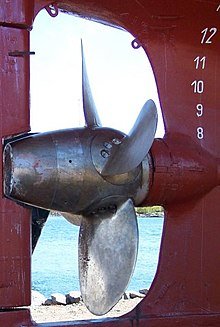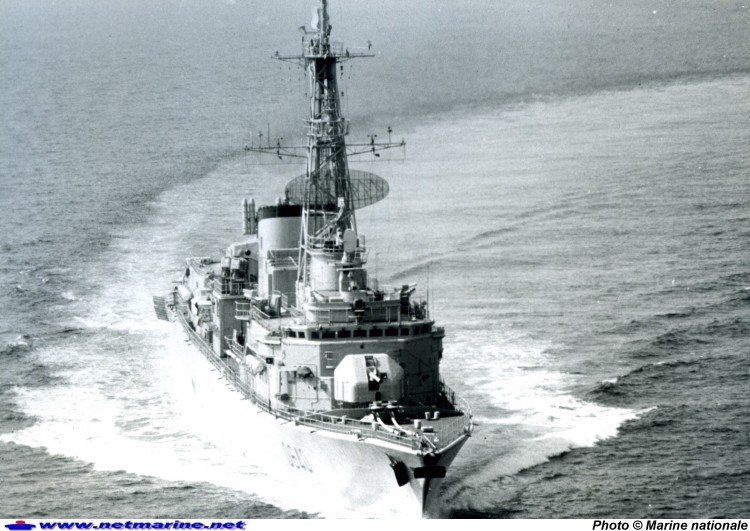This is the story of my life so far: 68 years and counting.
Prequel: A Brief History of my Family in France

The story starts here
Previous episode: Part 56
The Propulsion System of the Corvette Georges Leygues
While the Frigate Tourville had a very standard propulsion system for the time: two fixed-pitch propeller driven by two steam-turbine engines, the propulsion system of the Corvette Georges Leygues was quite novel.
There were two propellers, but they were variable-pitch ones and they were driven by diesel engines or gas-turbines.

Variable-Pitch Propeller
source
A variable-pitch propeller is one where the angle of the blades around their long axis may be controlled to change the blade pitch.
An advantage of variable-pitch propeller is that different speeds for the ship may be obtained with the same number of revolution per second for the drive trains.
A vessel with a variable-pitch propeller can accelerate faster from a standstill, and can decelerate much more effectively, making stopping quicker and safer.
Wikipedia
With a steam engine, the number of revolutions per second of the drive trains may be as slow as needed. This is not the case for diesel or gas-turbine engines without an inefficient coupling between the engine and the drive train.
I believe the reason why the Navy stopped using steam engines was because there were not many suppliers, while there are many manufacturers of marine diesel engines and gas-turbine engines.
Trials at Sea of the Propulsion System
The trials at sea of the Georges Leygues were done in two periods. From February to June 1978 for the propulsion system, then in fall 1978 for the equipments.

source
At PMP (maximal possible power) with the gas-turbines the Georges Leygues was reaching a speed of more than 30 knots (~56 km/h).
For the "crash stop" from maximum speed at PMP to full stop, the Georges Leygues was able to stop in 1.5 ship lengths, while the specifications were a maximum of 3 ship lengths. Because of its variable-pitch propellers, stopping the ship in emergency was easily done by reversing the blade pitch of the propellers.
The propulsion trials at sea took a long time, because the propulsion system was quite new and the Navy wanted to know all of its characteristics, including the most efficient way to use it at various speeds.
After the second period of trials at sea in the fall 1978, the Georges Leygues was ready for its Long Crossing (TLD in French) in February-March 1979.
Continue to Part 58
If you like this story, please consider to follow me
Summary
Part 1 - Part 2 - Part 3 - Part 4 - Part 5 - Part 6 - Part 7 - Part 8
Part 9 - Part 10 - Part 11 - Part 12 - Part 13 - Part 14 - Part 15 - Part 16
Part 17 - Part 18 - Part 19 - Part 20 - Part 21 - Part 22 - Part 23 - Part 24
Part 25 - Part 26 - Part 27 - Part 28 - Part 29 - Part 30 - Part 31 - Part 32
Part 33 - Part 34 - Part 35 - Part 36 - Part 37 - Part 38 - Part 39 - Part 40
Part 41 - Part 42 - Part 43 - Part 44 - Part 45 - Part 46 - Part 47 - Part 48
Part 49 - Part 50 - Part 51 - Part 52 - Part 53 - Part 54 - Part 55 - Part 56

